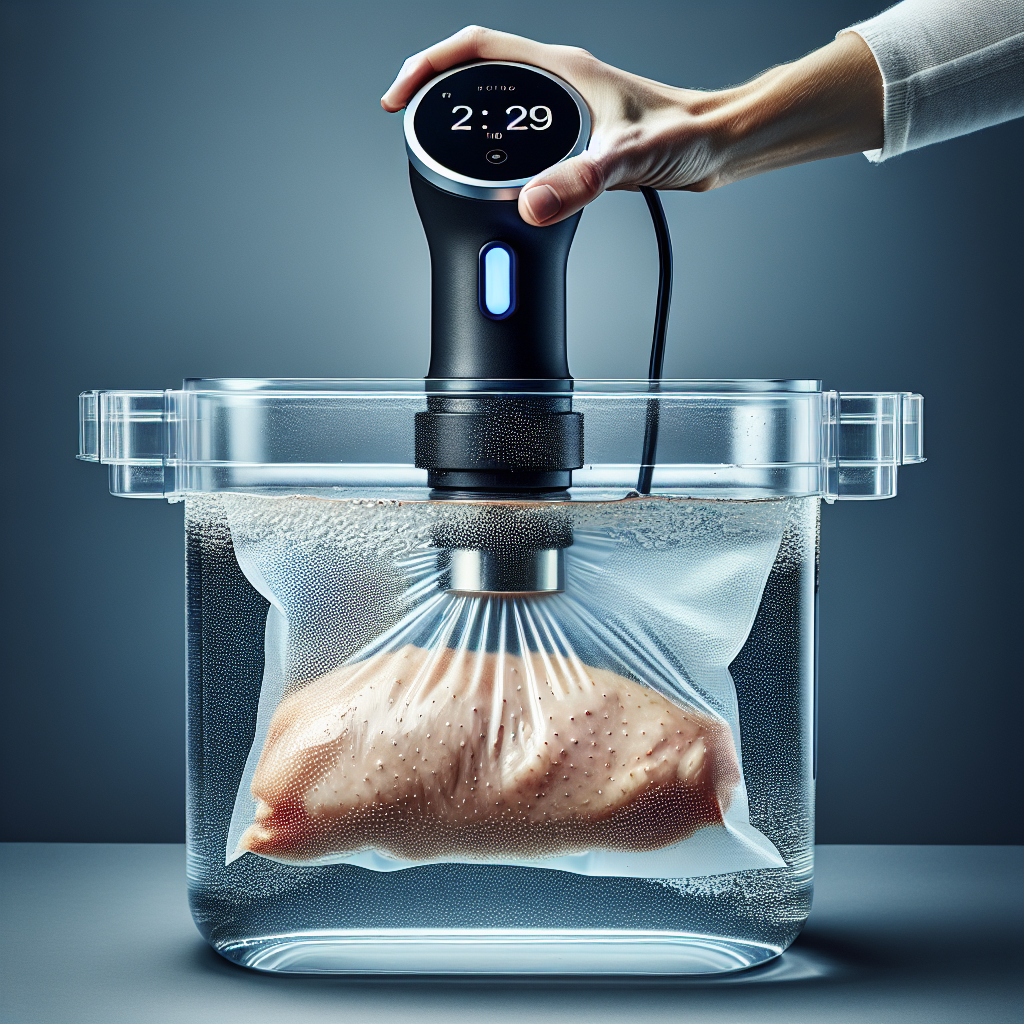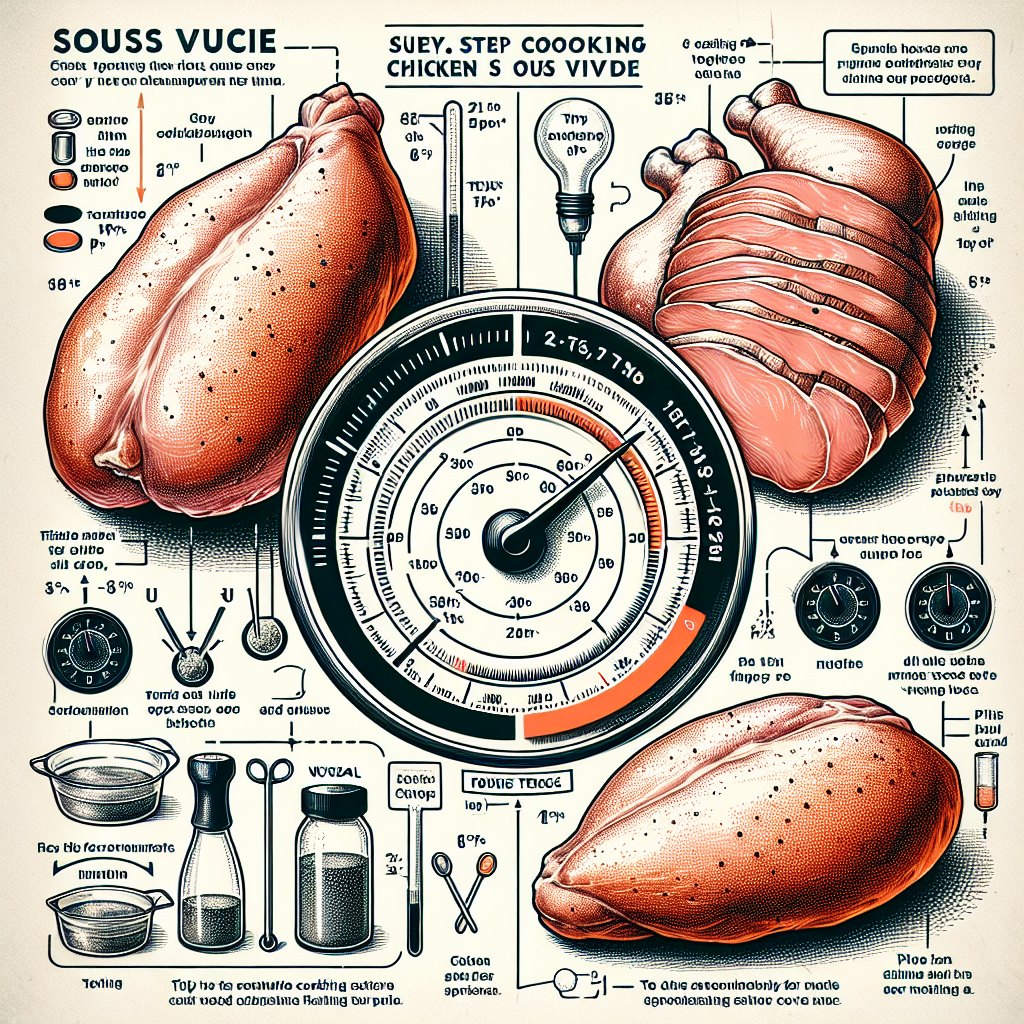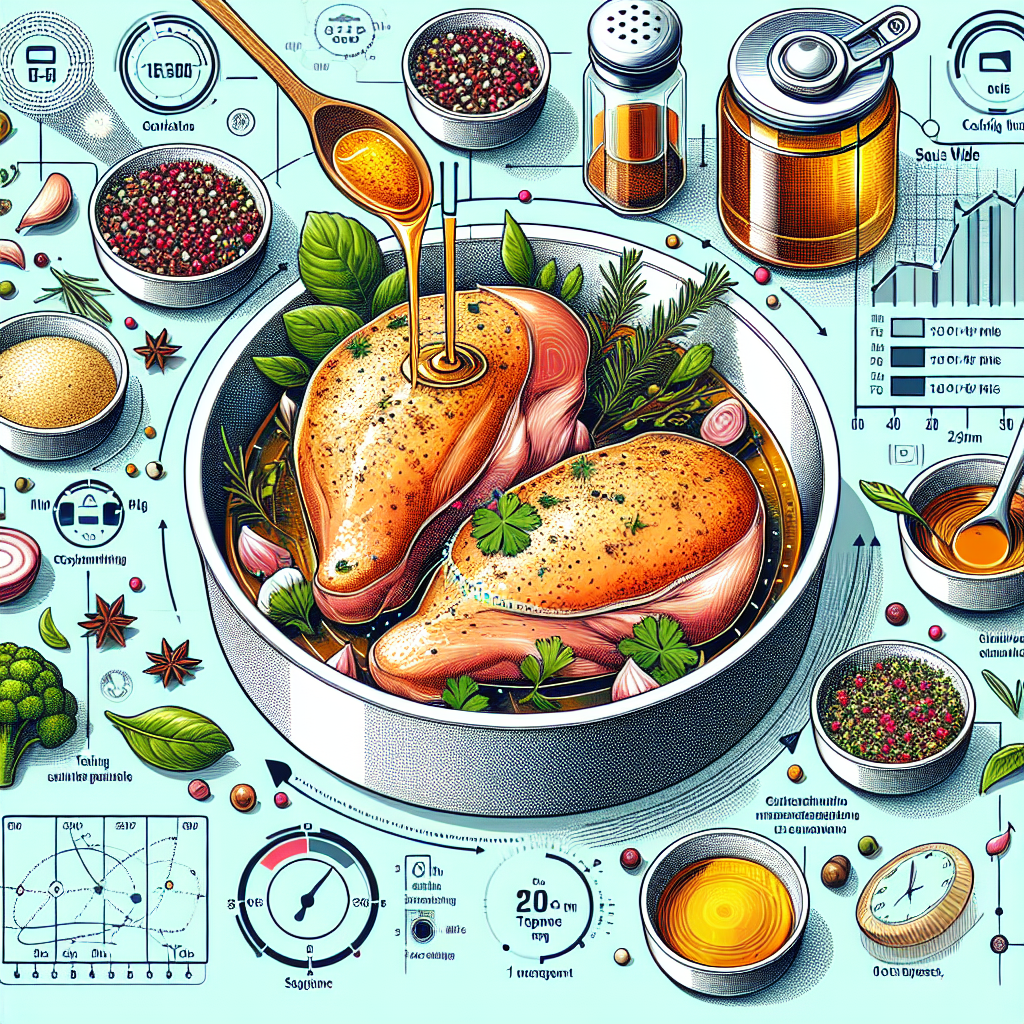
If you’re a chicken enthusiast looking to elevate your culinary skills, you’ve come to the right place! In this article, we’ll uncover the secrets to achieving perfectly cooked chicken breasts using the sous vide cooking method. From tender and juicy to flavor-packed and succulent, we’ll guide you through the optimal cooking times to attain chicken breast perfection. So grab your apron and let’s dive into the world of sous vide chicken cooking!
Why Cook Chicken Breasts Sous Vide?
Sous vide cooking has gained popularity in recent years for its ability to produce perfectly cooked, tender, and juicy chicken breasts. There are several reasons why cooking chicken breasts sous vide is a great choice.
Retains Moisture
One of the biggest advantages of cooking chicken breasts sous vide is that it helps retain moisture. Traditional cooking methods such as grilling or baking can often lead to dry and overcooked chicken breasts. With sous vide cooking, the chicken is sealed in an airtight bag and cooked in a water bath at a precise temperature. This gentle cooking method ensures that the chicken breasts stay moist and tender, resulting in a more enjoyable eating experience.
Evenly Cooked
Another benefit of cooking chicken breasts sous vide is that they are cooked evenly throughout. Since the chicken is cooked in a water bath, the heat is distributed evenly, leaving no hot or cold spots. This means that every part of the chicken breast will be cooked to perfection, resulting in a consistent texture and flavor.
Prevents Overcooking
With sous vide cooking, it is almost impossible to overcook chicken breasts. Unlike other cooking methods where timing is crucial, sous vide cooking allows you to cook the chicken to the exact desired doneness without the risk of overcooking. By setting the water bath to the desired temperature, you can ensure that the chicken breasts will be cooked to perfection every time.
Factors Affecting Sous Vide Cooking Times for Chicken Breasts
When cooking chicken breasts sous vide, there are several factors that can affect the cooking time. It’s important to consider these factors to ensure that the chicken is cooked to your desired level of doneness.
Thickness of Chicken Breasts
The thickness of the chicken breasts will greatly affect the cooking time. Thicker chicken breasts will require a longer cooking time, while thinner ones will cook more quickly. It’s essential to take the thickness into account when determining the cooking time for your chicken breasts.
Starting Temperature
The starting temperature of the chicken breasts before cooking will also impact the cooking time. If the chicken breasts are chilled or frozen, they will require a longer cooking time compared to chicken breasts that are at room temperature.
Desired Doneness
Everyone has different preferences when it comes to the doneness of their chicken breasts. Some people prefer tender and juicy chicken breasts, while others prefer a firmer texture. It’s important to consider your desired level of doneness when determining the cooking time for your chicken breasts.
Boneless vs. Bone-in Chicken Breasts
Boneless chicken breasts and bone-in chicken breasts will have different cooking times. Boneless chicken breasts cook more quickly than bone-in chicken breasts due to the presence of the bone. It’s important to adjust the cooking time accordingly depending on whether you are cooking boneless or bone-in chicken breasts.

Recommended Sous Vide Cooking Times and Temperatures for Chicken Breasts
To achieve the perfect sous vide chicken breasts, it’s important to follow recommended cooking times and temperatures based on the thickness and type of chicken breasts you are cooking.
Thin Boneless Chicken Breasts (1/2 inch or less)
For thin boneless chicken breasts, a cooking time of around 1-2 hours at a temperature of 145°F (63°C) is recommended. This will result in tender and juicy chicken breasts with a slightly pink center.
Standard Boneless Chicken Breasts (1/2 – 3/4 inch)
If you are cooking standard boneless chicken breasts, a longer cooking time of 2-3 hours at a temperature of 145°F (63°C) is recommended. This will ensure that the chicken breasts are cooked through while remaining moist and tender.
Thick Boneless Chicken Breasts (3/4 – 1 inch)
Thick boneless chicken breasts require a longer cooking time to ensure that the center is fully cooked. A cooking time of 3-4 hours at a temperature of 145°F (63°C) is recommended for thick boneless chicken breasts.
Bone-in Chicken Breasts (Varying Thickness)
Bone-in chicken breasts will require a longer cooking time due to the presence of the bone. A cooking time of 4-6 hours at a temperature of 145°F (63°C) is recommended for bone-in chicken breasts, with the exact cooking time depending on the thickness of the chicken breasts.
Cooking from Frozen
If you are cooking chicken breasts from frozen, it is recommended to increase the cooking time by 50%. This means that for boneless chicken breasts, the cooking time would be around 2-3 hours, while for bone-in chicken breasts, the cooking time would be around 6-9 hours at a temperature of 145°F (63°C).
Tips for Achieving the Best Results
To ensure the best results when cooking chicken breasts sous vide, here are some tips to keep in mind:
Brining the Chicken Breasts
Before cooking, consider brining the chicken breasts to enhance their flavor and juiciness. A simple brine solution of salt and water can help the chicken breasts retain moisture during the sous vide cooking process.
Seasoning the Chicken before Bagging
Don’t forget to season the chicken breasts before placing them in the sous vide bags. This will allow the flavors to penetrate the meat and enhance the overall taste of the chicken.
Using a Vacuum Sealer or Ziplock Bags
To seal the chicken breasts in the sous vide bags, you can either use a vacuum sealer or the water displacement method with ziplock bags. Both methods work well, but make sure to remove as much air as possible to ensure a proper seal.
Ensuring Proper Water Bath Temperature
Invest in a reliable sous vide immersion circulator to ensure that the water bath stays at a constant temperature throughout the cooking process. Fluctuations in temperature can impact the doneness and texture of the chicken breasts.
Searing the Chicken Breasts
To add an extra layer of flavor and create a crispy exterior, sear the chicken breasts in a hot pan or use a kitchen torch after cooking sous vide. This will give the chicken a beautiful golden brown color and provide a delicious contrast in texture.
Monitoring and Testing Doneness
When cooking chicken breasts sous vide, it’s important to monitor and test for doneness to ensure they are cooked to your liking.
Using a Digital Meat Thermometer
To check the internal temperature of the chicken breasts, use a digital meat thermometer. The desired temperature for fully cooked chicken breasts is 165°F (74°C), but you can adjust this based on your preference for doneness.
Visual Cues for Doneness
Visual cues can also help determine the doneness of the chicken breasts. Fully cooked chicken breasts should have a firm texture, white color throughout, and clear juices. If the chicken breasts are still pink or have any traces of blood, they need more cooking time.
Resting the Chicken Breasts
After cooking sous vide, let the chicken breasts rest for a few minutes before serving. This allows the juices to redistribute, resulting in a more flavorful and moist chicken breast.
Adjusting Cooking Times for Different Textures
Sous vide cooking allows you to achieve different textures for your chicken breasts by adjusting the cooking time.
Tender and Juicy
For tender and juicy chicken breasts, cook them at the recommended temperatures and times mentioned earlier. This will result in a moist and succulent texture that is sure to delight your taste buds.
Firm and Chewy
If you prefer a firmer and chewier texture, you can increase the cooking time by 30 minutes to 1 hour. This will result in chicken breasts that have a slightly more firm and substantial bite.
Shreddable or Pulled
To achieve chicken breasts that are easily shredded or pulled, increase the cooking time by 2-4 hours. This longer cooking time will break down the muscle fibers, resulting in chicken that can be effortlessly shredded or pulled apart.
Delicious Sous Vide Chicken Breast Recipes to Try
Once you have mastered the art of sous vide chicken breasts, here are some delicious recipes to try:
Garlic and Herb Chicken Breast
Infuse your chicken breasts with the flavors of garlic and herbs by seasoning them with a mixture of minced garlic, chopped fresh herbs (such as rosemary, thyme, and parsley), salt, and pepper. Cook sous vide to perfection and finish off with a quick sear for a mouthwatering dish.
Lemon and Thyme Chicken Breast
For a bright and refreshing flavor, season your chicken breasts with lemon zest, fresh thyme leaves, salt, and pepper. Sous vide until tender and then sear to create a caramelized crust. Serve with a squeeze of lemon juice for an extra burst of freshness.
Teriyaki Glazed Chicken Breast
Marinate your chicken breasts in a homemade teriyaki sauce made with soy sauce, ginger, garlic, brown sugar, and sesame oil. Cook sous vide and then brush with more teriyaki sauce before giving them a quick sear for a deliciously sticky and flavorful dish.
BBQ Chicken Breast
Coat your chicken breasts in your favorite BBQ rub or sauce and let them marinate for a few hours. Cook sous vide for tender and juicy chicken, and then finish on the grill or under the broiler to caramelize the BBQ sauce for a smoky and finger-licking dish.
Safety Considerations
When cooking chicken breasts sous vide, it’s important to keep some safety considerations in mind.
Using Pasteurized Eggs for Some Recipes
Some recipes may call for the use of raw or partially cooked eggs. It is important to use pasteurized eggs in these recipes to reduce the risk of foodborne illnesses.
Properly Storing and Reheating Leftovers
If you have any leftover sous vide chicken breasts, it’s essential to store them properly in the refrigerator. Make sure to cool them down quickly before placing them in an airtight container. When reheating, it’s best to use the sous vide method again to maintain the tender and juicy texture.
Following Food Safety Guidelines
Always follow proper food safety guidelines when handling and preparing chicken breasts. Ensure that your equipment and utensils are clean and sanitized, and wash your hands thoroughly before and after handling raw chicken.

Conclusion
Cooking chicken breasts sous vide is a game-changer when it comes to achieving perfectly cooked, moist, and flavorful chicken. By understanding the factors that affect cooking times, following recommended temperatures, and implementing tips for the best results, you can enjoy restaurant-quality chicken breasts in the comfort of your own home. So, grab your sous vide setup, experiment with different flavors, and get ready to enjoy the ultimate sous vide chicken breast experience!





